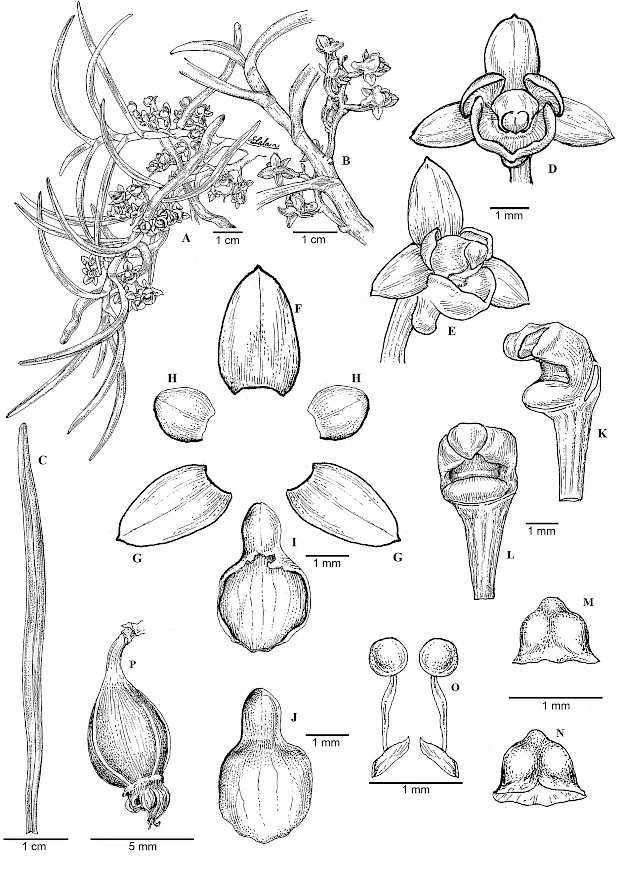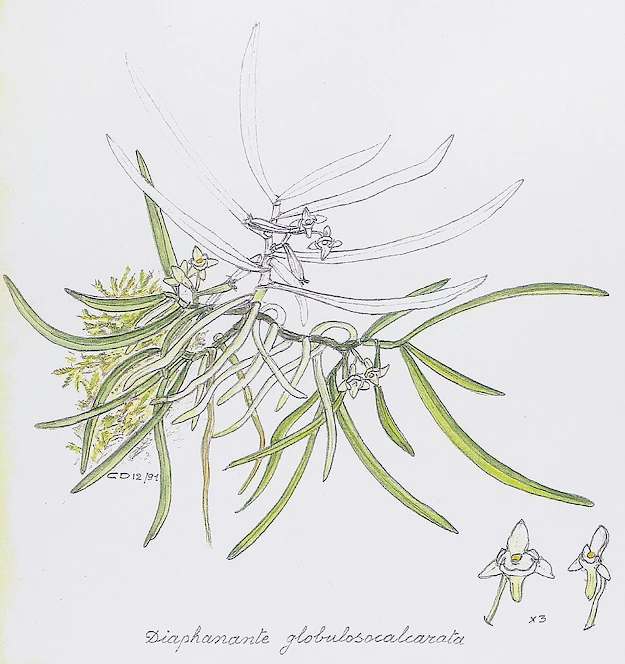New orchid species reveals unique biodiversity in the Western Rift Valley
Arthur Macedo, PhD student at the Botanical Garden of the University of Coimbra and the Centre for Functional Ecology (CFE), and João Farminhão, researcher at the Centre for Functional Ecology (CFE), both members of the TERRA Associate Laboratory, described a new species of epiphytic orchid of the genus Rhipidoglossum from Tropical Africa. It is endemic to the Western Rift Valley region, where it has been reported in Uganda, Rwanda, and the Democratic Republic of Congo. For decades, it was confused with two other species of the same genus, R. adoxum and R. globulosocalcaratum, which do not occur in the same region. The taxonomic description now published clarifies the distinctive morphological features between these species and redefines their geographical boundaries.
João Farminhão (CFE/TERRA) recalls that “from the moment of discovery to the description of a new species, it typically takes a few years.” It was in 2016, during his master’s thesis at the Université libre de Bruxelles, that he first identified the species as new. In 2018, he had the opportunity to observe and collect it on Kaboza Hill, in the Cyamudongo Forest, Rwanda, during fieldwork with Professor Eberhard Fischer. “Arthur’s doctoral thesis was the opportunity he needed to describe Rhipidoglossum fischerianum in detail, as part of a review of the Rhipidoglossum genus,” he adds.
The new species has been assessed as Vulnerable (VU) in terms of extinction risk, according to IUCN criteria, with the main threats being habitat degradation caused by urban expansion, subsistence agriculture, and the advance of tea plantations and Pinus patula. For researcher Arthur Macedo, in “the current context of worsening climate crisis and weakening environmental policies in several countries, especially in the tropical regions of the planet, the description of this new species represents an important step in expanding knowledge about biodiversity, with emphasis on the Western Rift in Tropical Africa.” João Farminhão adds that “the description of yet another species endemic to the Western Rift region reinforces the urgency of conserving these mountain forests, which still harbor many undiscovered species.”
The name fischerianum pays tribute to Professor Eberhard Fischer (University of Kaiserslautern-Landau, Germany), recognized as the leading expert on the flora of the Western Rift Valley for his significant scientific contributions to the region.
The work was carried out in collaboration with researchers from the Herbarium et Bibliothèque de Botanique africaine (Université libre de Bruxelles), Universidade Federal do Rio de Janeiro (Brazil), Missouri Botanical Garden (USA), and Meise Botanic Garden (Belgium), as part of a broader taxonomic review of the genus Rhipidoglossum, which already has 53 species described in continental Tropical Africa. The team conducted an exhaustive review of regional floras and field photographs to gather all available information on the new species. Researcher Arthur Macedo pointed out that “accelerating taxonomy, the science that names and describes biodiversity, is an urgent goal for several scientific institutions around the world for the coming decades. This effort allows for the identification and mapping of plant, fungus, animal, and other organism species, as well as helping to recognize threats to their existence early on and assess their conservation status.”
The article, entitled “A new species of Rhipidoglossum (Orchidaceae, Angraecinae) from the Western Rift Valley (Africa)”, is available in open access via DOI. doi.org/10.5091/plecevo.155517.



